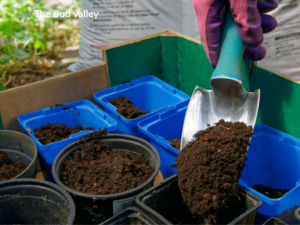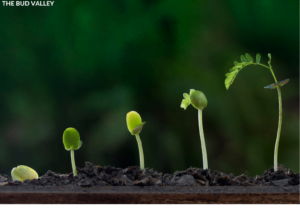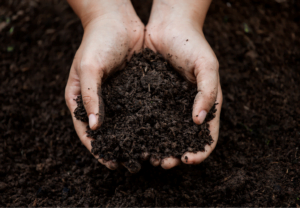I have five lucky bamboo trees that I am constantly caring for. However, it’s important to note that it’s not called lucky bass; its real name is Dracaena sanderiana. There isn’t a definitive history of how this plant got its name or its origin, but they are known for their easy growth with minimal water requirements. The canes of these plants resemble bamboo stems, leading many to believe they are native to Japanese culture. Despite these similarities, lucky bamboo trees don’t have any cultural significance in Japan.

These trees have greatly enhanced the beauty of my house. Moreover, they can be grown according to one’s preference, which is why people desire to have them at home. When I purchased this lucky bamboo in 2015, I had no prior experience with this plant. However, over the years, I have learned about it through various channels. After 8-9 years of experience, I aim to present all the details about this plant. I hope that through this blog, you can gain a comprehensive understanding of this plant with 100% certainty.
Lucky Bamboo Successful Care guideline
Sun Light

I try to explain in every blog that every plant needs sunlight—some may require more, while others need less. However, no plant can survive long without sunlight, so this plant also needs sunlight. It cannot tolerate direct sunlight, as it causes a lot of damage to the plant. The leaves are more prone to burning, so it is always better to provide this plant with indirect sunlight, preferably in a location with a little shade where the sunlight is diffused, approximately 40% out of 100. If you choose such a location, it will be a suitable place to keep the tree.
Water

Watering the plant is very important; no plant grows fast without water, and the normal growth rate of the plant is not normal. Moreover, this plant never grows fast without water, so water is a must for this plant to grow fast and maintain the quality of the plant. If you want to keep this plant in water, i.e., plant this plant without soil, then you must keep the roots of the plant underwater all the time and Make sure to replace the water once a week so that the plant receives the proper amount of nutrients from the water. You must take care while changing the water that the water that will be added must be filtered, or you can use rainwater; it will not cause any harm. And if you want to plant in the ground, then you can do that too, but watering first, you must check whether the soil at the base of the plant has hardened, that is if the soil at the base of the plant has hardened, water should be given to this plant.
Humidity

There will be more information on how to keep each plant’s humidity level in the home as it is crucial, but for now, check out this blog post, I will just say that the humidity in your house is fine for this plant.
Feeding
Feeding the lucky bamboo depends on where the plant is planted because if you grow this plant in water only, then this plant does not need any additional feeding. If you grow this plant in compost, i.e., soil, then it is enough to change the soil once every two to one year using compost.
Temperature

Temperature is a very important factor because the normal growth of a plant depends on the temperature. A plant cannot grow properly if the temperature is not at the proper level. So, the normal temperature for this plant is 16°-24°C. If the temperature in your house or house is less than 10 degrees Celsius or 50 degrees Fahrenheit, then this plant will not grow.
Reporting

If you keep this plant in water, i.e., merely replace the water in the pot it lives in once a week, reporting for this plant is not as critical. If you grow this plant in soil and compost, you do not need repotting. However, if you plant it, you can do repotting after 2-3 years.
Propagating
What is very important for propagating this plant is that when you try to propagate it, you must choose a branch that has enough leaves and downward roots, and very gently separate the plant. You can successfully breed this tree if you can select it from other trees. If not, then it will be very good to buy a new tree.
Speed of Growth

The growth of this tree depends on the care it receives. Moreover, in general, even with the right amount of care, this tree grows slowly as you come to know. This is because the tree grows slowly, which means that you must provide it with sufficient care without becoming impatient. It will keep expanding gradually.
Flowers
Usually, this plant produces very few flowers, so it is very difficult to expect flowers from it. Therefore, it is better not to expect flowers from this plant.

Benefits of Growing Lucky Bamboo
Enhances Indoor Air Quality: Lucky bamboo is known for its air-purifying qualities, helping to remove toxins like formaldehyde, benzene, and trichloroethylene from the air.
Symbol of Good Luck: In Feng Shui, lucky bamboo is believed to bring good luck, pro

asperity, and happiness in the household.
Low Maintenance: Lucky bamboo is a resilient plant that thrives in water or soil, making it an excellent choice for both seasoned gardeners and beginners alike.
Popular Varieties of Lucky Bamboo
Curly Lucky Bamboo: This variety has intricate curls and twists in its stalks, adding a unique and elegant touch to any space.
Spiral Lucky Bamboo: This type of bamboo is distinguished by its twisted stalks, which produce an eye-catching and visually pleasing display.
Tower Lucky Bamboo: Tower Lucky bamboo has a tall and straight stalk, symbolizing growth and prosperity in Feng Shui beliefs.
Soil and Fertilization Tips


Lucky bamboo grows nicely in well-draining soil, on pebbles, or in water. Make sure to replace the water in a growing container every two to four weeks.
During the growing season, fertilize lucky bamboo sparingly once a month with a diluted liquid houseplant fertilizer.
Common Pests and Diseases
Lucky bamboo is generally resistant to pests and diseases. However, overwatering can lead to root rot, while spider mites and aphids may occasionally infest the plant.
To prevent pests, ensure proper drainage, avoid over-fertilization, and regularly inspect the plant for any signs of infestation.
Tips for Maintaining Healthy Lucky Bamboo
Place lucky bamboo in indirect sunlight to prevent leaf burn and maintain its vibrant green color. Keep the water clean and free from any debris to prevent algae growth, which can hinder the plant’s growth.
Design and Styling Ideas

Lucky Bamboo Arrangements
Create a simple and elegant arrangement by placing lucky bamboo in a glass vase filled with water and decorative pebbles. Combine lucky bamboo with other indoor plants like peace lilies or pothos to create a vibrant and lush display.
Fang Shun Placement Considerations
Place lucky bamboo in the east or southeast corner of your home or office to attract wealth, prosperity, and success according to Feng Shui principles. Avoid placing lucky bamboo in the bedroom or bathroom, as it is believed to bring bad luck in these areas.
In the above discussion, I have presented all the information from my personal experience on how to take care of this plant, what benefits can be obtained from it, and how you can beautifully decorate it in your home. I have tried to present everything correctly. If you do everything like this, you will have 100% proper growth, and you will be able to create a different atmosphere in your home.

